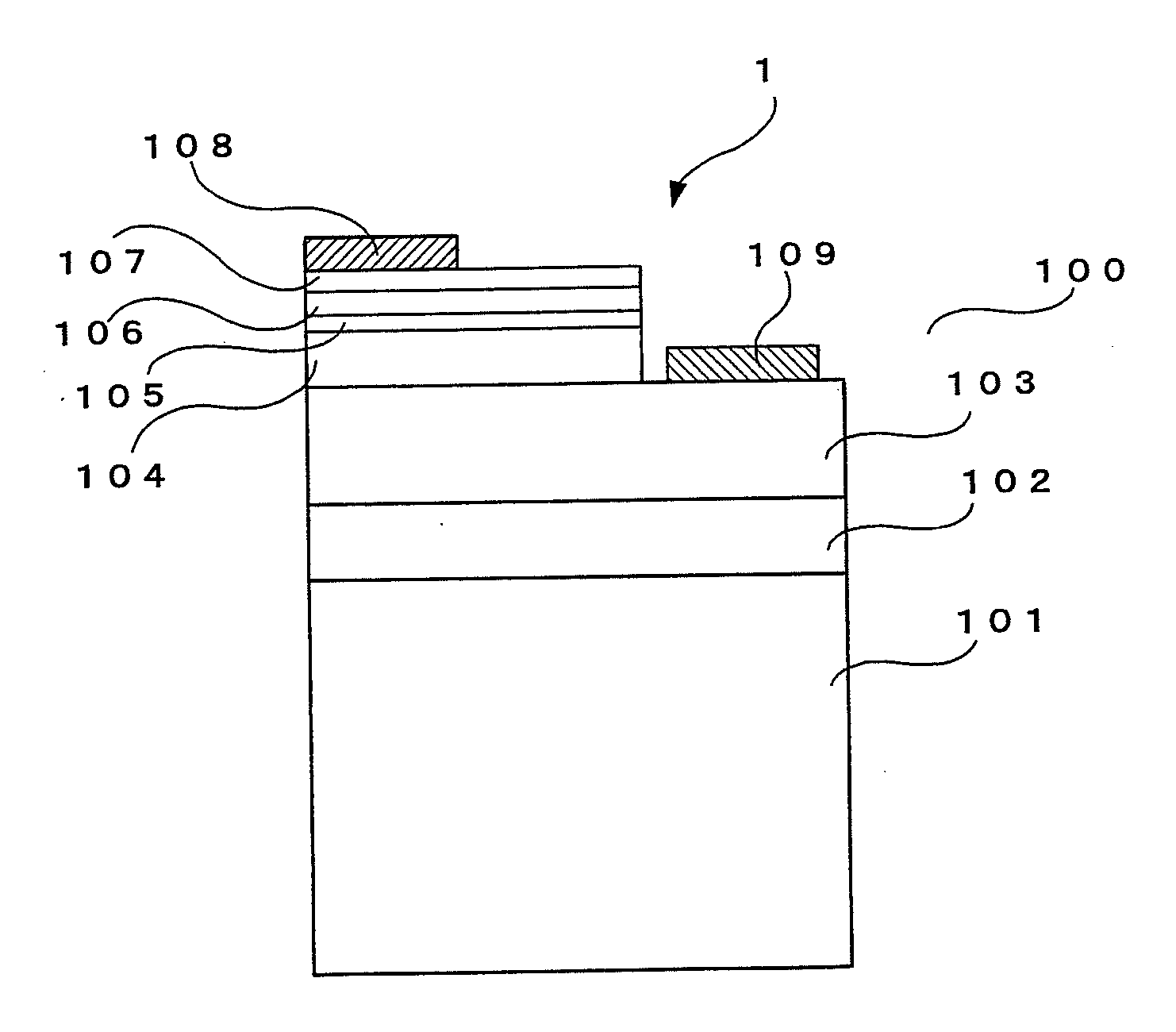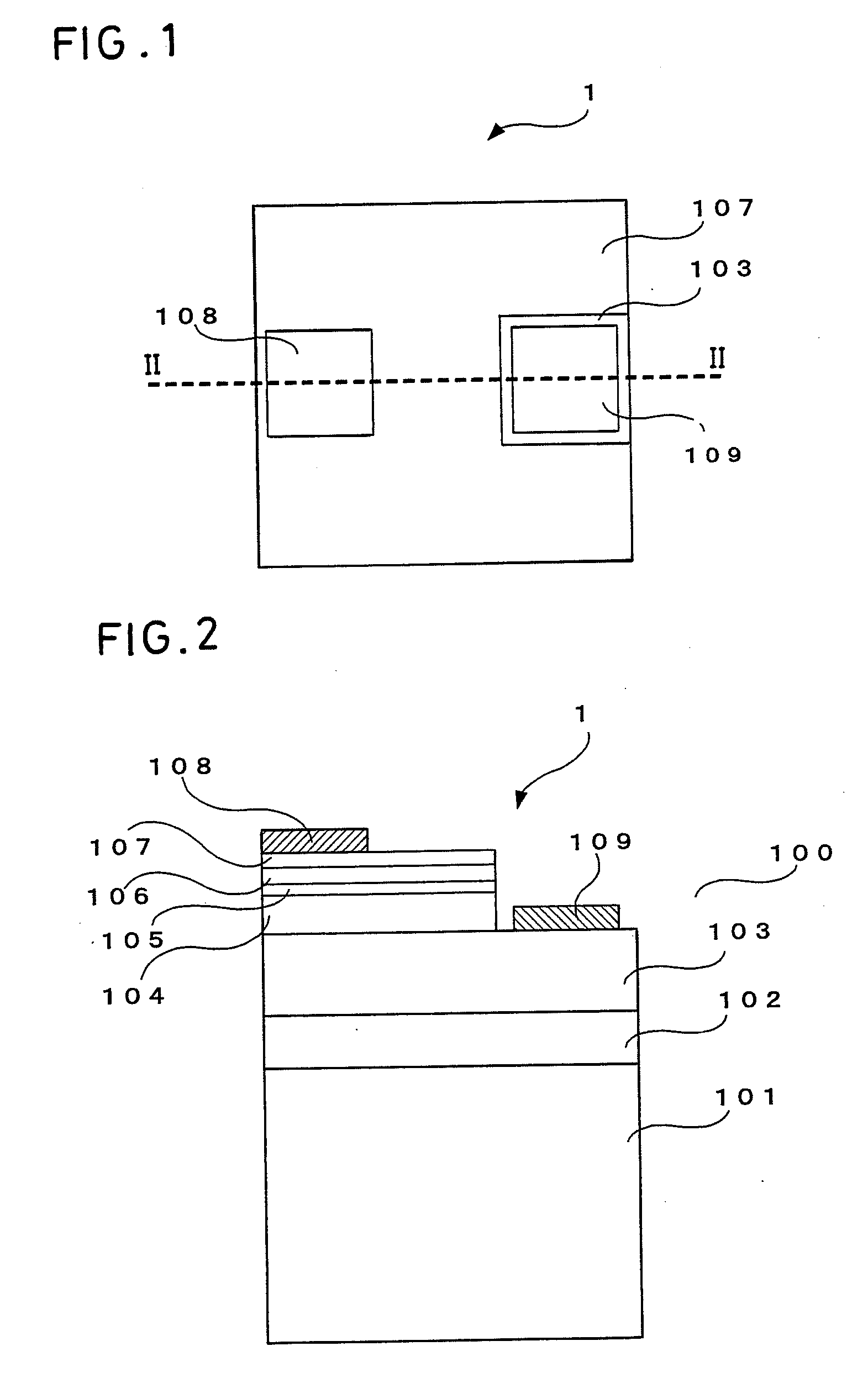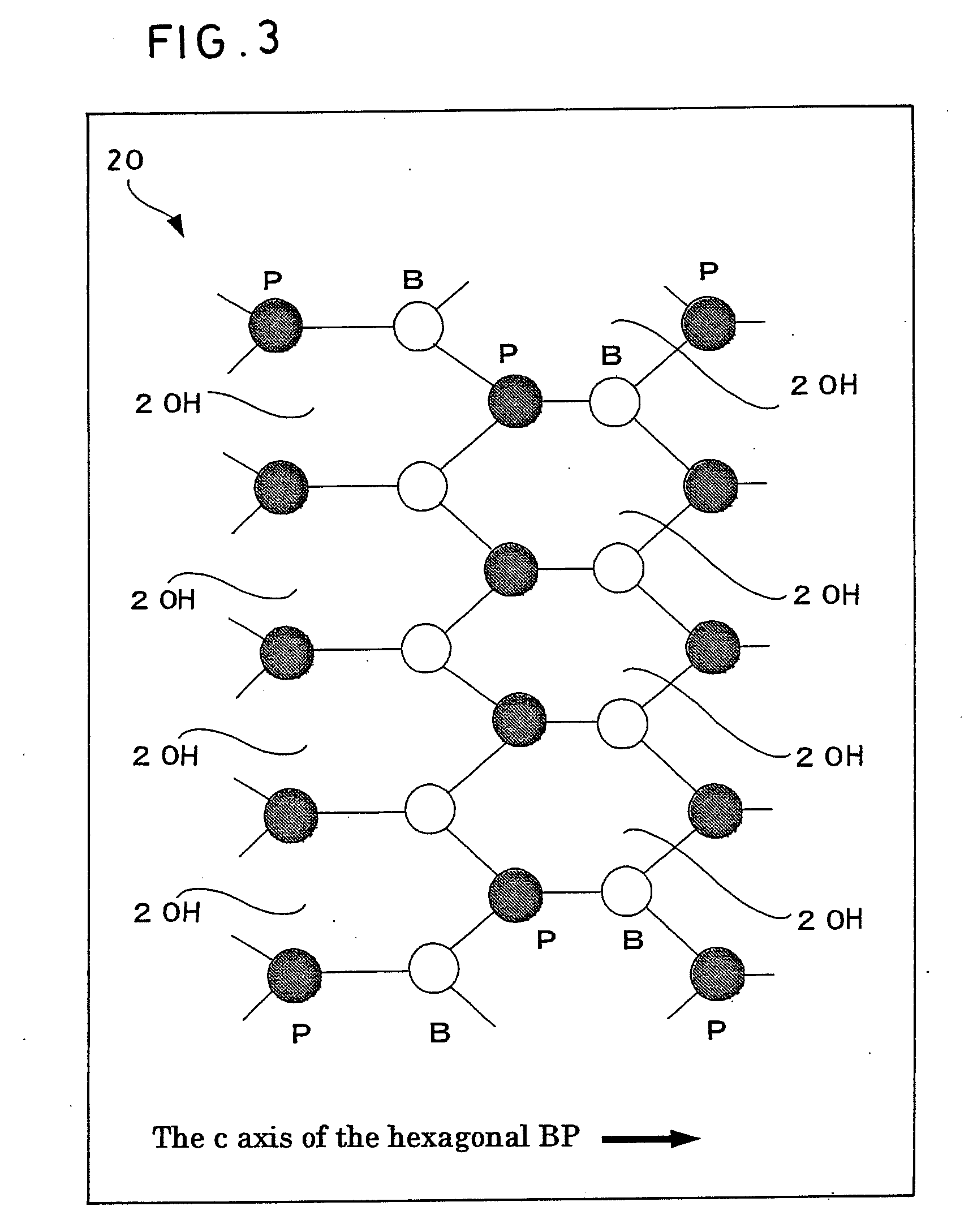Compound semiconductor device
a semiconductor and compound technology, applied in the direction of semiconductor devices, basic electric elements, electrical apparatus, etc., can solve the problems of inability to stably manufacture, high photoelectric conversion efficiency, and subsequent growth of crystalline defects, so as to reduce the flow of device-operating current, high photoelectric conversion efficiency, and high intensity
- Summary
- Abstract
- Description
- Claims
- Application Information
AI Technical Summary
Benefits of technology
Problems solved by technology
Method used
Image
Examples
example 1
[0189]This invention will be specifically explained by citing as an example the case of configuring a compound semiconductor LED by utilizing a hexagonal monomeric BP layer disposed as bonded on the surface formed of a (1.1.-2.0.) crystal face of a bulk crystal of sapphire.
[0190]FIG. 1 schematically illustrates the planar structure of the LED to which this Example 1 pertains. Then, FIG. 2 is a schematic cross section illustrating the compound semiconductor device LED 1, taken through FIG. 1 along the broken line II-II.
[0191]A stacked structure 100 intended to manufacture the LED 1 was formed by using as a substrate 101 a sapphire (α-alumina single crystal) having a (1.1.-2.0.) crystal face (commonly called “A-plane”) as its surface. On the surface of the (1.1.-2.0.) crystal face of the substrate 101, an undoped n-type hexagonal monomeric BP layer formed in a thickness of about 290 nm was formed as a hexagonal boron phosphide-based semiconductor layer 102 by using the ordinary MOCVD ...
example 2
[0197]The contents of this invention will be specifically explained by citing as an example the case of configuring a compound semiconductor LED by adopting a bulk crystal of sapphire as a hexagonal single crystal and utilizing a hexagonal monomeric BP layer disposed thereon.
[0198]FIG. 8 schematically illustrates the planar structure of a LED to which this Example 2 pertains. Then, FIG. 9 is a schematic cross section illustrating the LED 1 taken through FIG. 8 along the broken line IX-IX.
[0199]The stacked structure 100 intended for manufacture of the LED 1 was formed by using as the substrate 101 a sapphire having a (1.1.-2.0.) crystal face as its surface. On the surface of the substrate 101, the undoped n-type hexagonal monomeric BP layer 102 having a layer thickness of about 290 nm was formed by using an ordinary MOCVD method.
[0200]By an ordinary TEM analysis, the (0.0.0.1.) crystal face of the hexagonal monomeric BP layer 102 was shown to be arranged in a mutually parallel state ...
example 3
[0206]This invention will be specifically explained by citing as an example the case of configuring a compound semiconductor LED from a stacked structure provided with a GaN layer having a (1.1.-2.0.) crystal face as its surface and a hexagonal monomeric BP layer disposed as bonded to the surface and having a (1.1.-2.0.) crystal face as its surface.
[0207]FIG. 10 schematically illustrates the planar structure of the LED 1 to which this Example 3 pertains. FIG. 11 is a schematic cross section illustrating the LED 1 taken through FIG. 10 along broken line XI-XI.
[0208]The stacked structure 100 intended to manufacture the LED 1 was formed by using as a substrate 101a sapphire (α-alumina single crystal) having a (1.-1.0.2.) crystal face (commonly called R-plane) as its surface. On the surface of the (1.-1.0.2.) crystal face of the substrate 101, an undoped n-type GaN layer 103 having a (1.1.-2.0.) crystal face as its surface was formed by utilizing an ordinary MBE method. The dislocation ...
PUM
 Login to View More
Login to View More Abstract
Description
Claims
Application Information
 Login to View More
Login to View More - R&D
- Intellectual Property
- Life Sciences
- Materials
- Tech Scout
- Unparalleled Data Quality
- Higher Quality Content
- 60% Fewer Hallucinations
Browse by: Latest US Patents, China's latest patents, Technical Efficacy Thesaurus, Application Domain, Technology Topic, Popular Technical Reports.
© 2025 PatSnap. All rights reserved.Legal|Privacy policy|Modern Slavery Act Transparency Statement|Sitemap|About US| Contact US: help@patsnap.com



